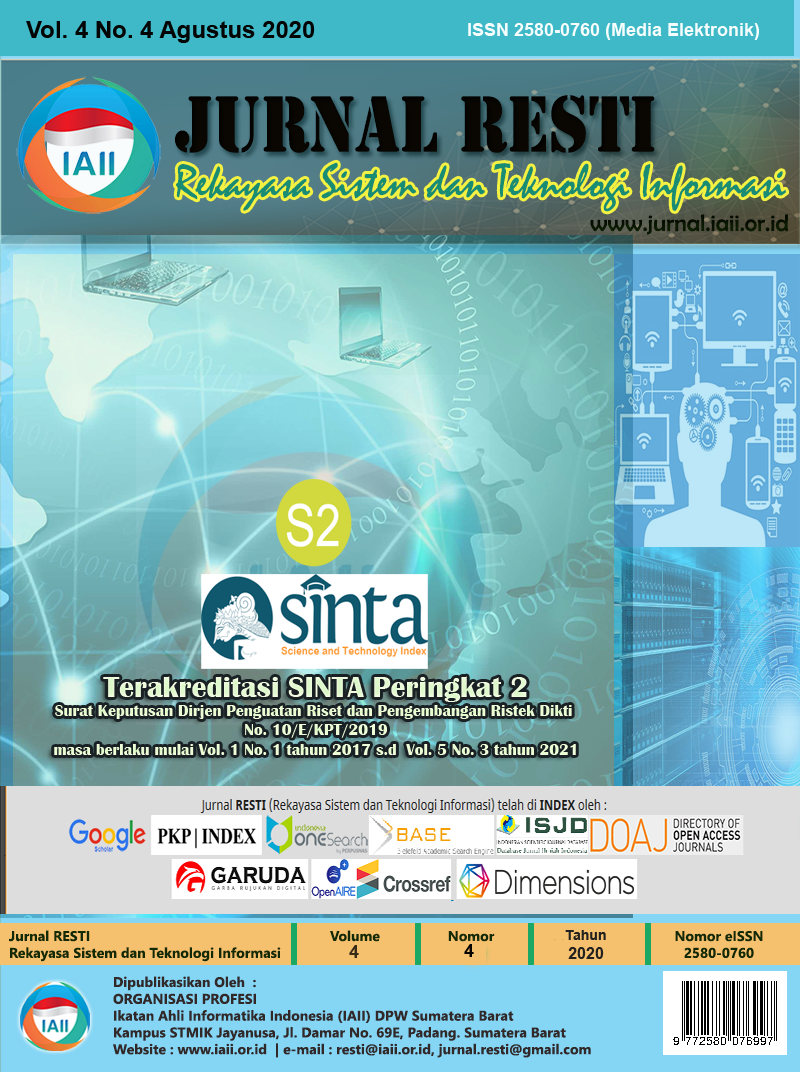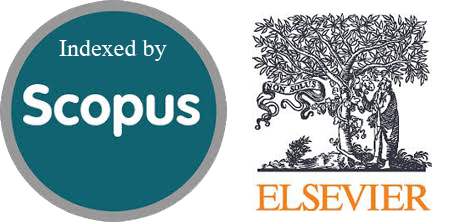Investigating Cyberbullying on WhatsApp Using Digital Forensics Research Workshop
Investigasi Cyberbullying pada WhatsApp Menggunakan Digital Forensics Research Workshop
Abstract
Cyberbullying in group conversations in one of the instant messaging applications is one of the conflicts that occur due to social media, specifically WhatsApp. This study conducted digital forensics to find evidence of cyberbullying by obtaining work in the Digital Forensic Research Workshop (DFRWS). The evidence was investigated using the MOBILedit Forensic Express tool as an application for evidence submission and the Cosine Similarity method to approve the purchase of cyberbullying cases. This research has been able to conduct procurement to reveal digital evidence on the agreement in the Group's features using text using MOBILedit. Identification using the Cosine method. Similarities have supported actions that lead to cyberbullying with different levels Improved Sqrt-Cosine (ISC) value, the largest 0.05 and the lowest 0.02 based on conversations against requests.
Downloads
References
R. Umar, I. Riadi, and B. F. Muthohirin, “Live forensics of tools on android devices for email forensics,” Telkomnika (Telecommunication Comput. Electron. Control., vol. 17, no. 4, pp. 1803–1809, 2019, doi: 10.12928/TELKOMNIKA.v17i4.11748.
S. Wang, “Standing up or standing by: Bystander intervention in cyberbullying on social media,” New Media Soc., p. 1461444820902541, Jan. 2020, doi: 10.1177/1461444820902541.
F. Zebua, “Laporan DailySocial: Survey Instant Messaging 2017,” dailysocial.id, 2017. https://dailysocial.id/post/laporan-dailysocial-survey-instant-messaging-2017.
J. Clement, “WhatsApp - Statistics & Facts,” statista, 2019. https://www.statista.com/topics/2018/whatsapp/.
T. D. Larasati and B. C. Hidayanto, “Analisis Live Forensics Untuk Perbandingan Aplikasi Instant Messenger Pada Sistem Operasi Windows 10,” Sesindo, vol. 6, no. November, pp. 456–256, 2017.
RSA, “Current State of Cybercrime,” 2016. https://www.rsa.com/content/dam/rsa/PDF/2016/05/2016-current-stateof-cybercrime.pdf.
J. P. S. A. Kusumadewi, “Polisi usut percakapan ‘jessica-mirna’ yang beredar di sosmed,” CNN Indonesia, 2016. http://www.cnnindonesia.com/nasional/20160121080758-12-105715/polisi-usut-percakapan-jessica-mirna-yang-beredar-di-sosmed/.
I. Riadi and P. Widiandana, “Mobile Forensics for Cyberbullying Detection using Term Frequency - Inverse Document Frequency ( TF-IDF ),” vol. 5, no. 2, pp. 68–76, 2020, doi: 10.26555/jiteki.v5i2.14510.
P. Widiandana, I. Riadi, and Sunardi, “Analisis investigasi forensik cyberbullying pada Whatsapp Messenger menggunakan metode NIST,” Semin. Nas. Teknol. Fak. Tekinik Univ. Krisnadwipayana, pp. 488–493, 2019, [Online]. Available: https://jurnal.teknikunkris.ac.id/index.php/semnastek2019/article/view/308.
I. Riadi, A. Yudhana, M. Caesar, and F. Putra, “Akuisisi Bukti Digital Pada Instagram Messenger Berbasis Android Menggunakan Metode National Institute Of Justice ( NIJ ),” J. Tek. Inform. dan Sist. Inf. Vol. 4 Nomor 2 Agustus 2018, vol. 4, pp. 219–227, 2018, [Online]. Available: https://www.researchgate.net/profile/Imam_Riadi/publication/327779438_Akuisisi_Bukti_Digital_Pada_Instagram_Messenger_Berbasis_Android_Menggunakan_Metode_National_Institute_Of_Justice_Institute_Of_Justice_Institute_of_Justice_NIJ/links/5ba3e1bf92851ca9ed1.
A. Yudhana, I. Riadi, and I. Anshori, “Analisis Bukti Digital Facebook Messenger Menggunakan Metode Nist,” It J. Res. Dev., vol. 3, no. 1, p. 13, 2018, doi: 10.25299/itjrd.2018.vol3(1).1658.
D. Van Bruwaene, Q. Huang, and D. Inkpen, “A multi-platform dataset for detecting cyberbullying in social media,” Lang. Resour. Eval., 2020, doi: 10.1007/s10579-020-09488-3.
Brian Carrier, “Defining Digital Forensic Examination and Analysis Tools Using nAbstraction Layers,” Int. J. Digit. Evid., vol. 1, no. 4, pp. 1–12, 2013, doi: 10.1017/CBO9781107415324.004.
A. L. Suryana, R. El Akbar, and N. Widiyasono, “Investigasi Email Spoofing dengan Metode Digital Forensics Research Workshop (DFRWS),” J. Edukasi dan Penelit. Inform., vol. 2, no. 2, pp. 111–117, 2016, doi: 10.26418/jp.v2i2.16821.
J. Feldman, R., & Sanger, “The Text Mining HandBook,” New York: Cambridge University Press, 2007.
C. Triawati, “Metode Pembobotan Statistical Concept Based untuk Klastering dan Kategorisasi Dokumen Berbahasa Indonesia,” Univ. Telkom, 2009.
F. J. Weiss, S. M., Indurkhya, N., Zhang, T., & Damerau, Text Mining: Predictive Methods fo Analyzing UnstructeredInformation. New York: Springer, 2005.
W. Dragut, E., Fang, F., Sistla, P., Yu, C., & Meng, Stop Word and Related Problems in Web Interface. Chicago: Computer Science Department University of Illinois, 2009.
F. Z. Tala, A Study Of Stemming Effects On Information Retrieval in Bahasa Indonesia. The Netherlands: Universiteitvan Amsterdam, 2003.
F. A. H. and D. A. Zuhdi, “Aplikasi Sistem Temu Kembali Dokumen dengan Metode Vector Space Model,” KONVERGENSI, vol. 5, no, pp. 38–49, 2009.
G. A. Pradnyana dan N. A. Sanjaya, “Perancangan Dan Implementasi Automated Document Integration Dengan Menggunakan Algoritma Complete Linkage Agglomerative Hierarchical Clustering,” vol. 5, (2, pp. 1–10, 2012.
S. Sohangir and D. Wang, “Improved sqrt-cosine similarity measurement,” J. Big Data, vol. 4, no. 1, 2017, doi: 10.1186/s40537-017-0083
Copyright (c) 2020 Jurnal RESTI (Rekayasa Sistem dan Teknologi Informasi)

This work is licensed under a Creative Commons Attribution 4.0 International License.
Copyright in each article belongs to the author
- The author acknowledges that the RESTI Journal (System Engineering and Information Technology) is the first publisher to publish with a license Creative Commons Attribution 4.0 International License.
- Authors can enter writing separately, arrange the non-exclusive distribution of manuscripts that have been published in this journal into other versions (eg sent to the author's institutional repository, publication in a book, etc.), by acknowledging that the manuscript has been published for the first time in the RESTI (Rekayasa Sistem dan Teknologi Informasi) journal ;








